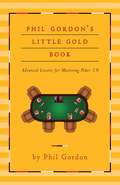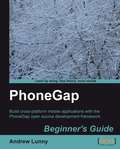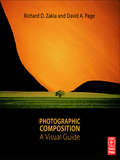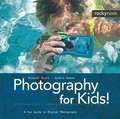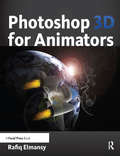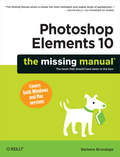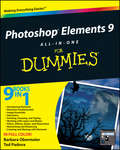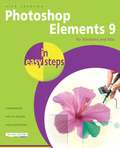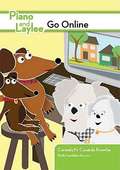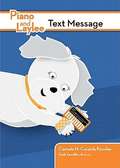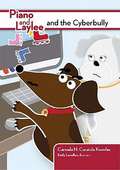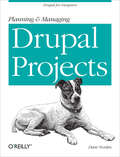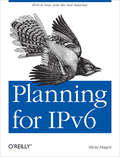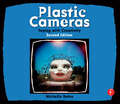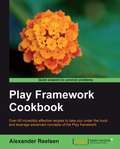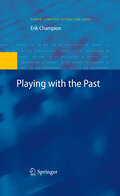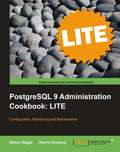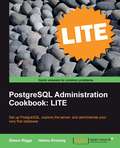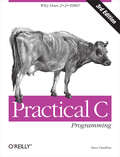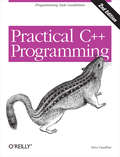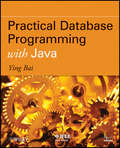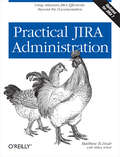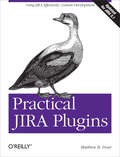- Table View
- List View
Phil Gordon's Little Gold Book
by Phil GordonSince reigning poker expert Phil Gordon's Little Green Book illuminated the strategies and philosophies necessary to win at No Limit Texas Hold'em, poker has changed quickly and dramatically. Today, Pot Limit Omaha is the game of choice at nosebleed stakes. The players are aggressive, the games are volatile, the decisions are tough, and the pressure is relentless. This is Poker 2.0. In his Little Gold Book, Phil Gordon reexamines the game from the ground up. The key to competing with today's top players is finding the post-flop edge, but to really understand this new playing style, you need to get comfortable with the underlying math. Don't be intimidated. Gordon makes this challenging material as approachable and simple as possible. Beginning with the foundations of Poker 2.0, he unpacks the modern poker player's tool kit, rigorously examines the new lines of play in No Limit Hold'em, dissects the fast and furious strategies of Pot Limit Omaha, and explores the winning poker mind-set that will take your game to an entirely different level. The golden age of poker is upon us. Phil Gordon's Little Gold Book will shorten your learning curve, and if you're willing to put in the time and the work, big bankrolls await.
PhoneGap Beginner's Guide
by Andrew LunnyThis is a step-by-step guide written in an informal, friendly style, for beginners to learn building cross-platform mobile applications with PhoneGap. You will find plenty of fully explained code and ample screenshots in the book to ease and speed up your understanding. This book is for developers, ideally with web development experience, who are interested in developing for the emerging mobile market, but do not want to learn a new SDK for every phone on the shelf. Readers should be comfortable with JavaScript, HTML, and CSS, and interested in learning the new advances in those technologies that allow for rich, native-style experiences.
Photo Op: 52 Weekly Ideas for Creative Image-Making
by Kevin MeredithFirst published in 2010. Routledge is an imprint of Taylor & Francis, an informa company.
Photographic Composition: A Visual Guide
by Richard D. Zakia David Page"Those of you who follow this blog know that Dr. Richard Zakia, former RIT professor, is one of my all time favorite photo gurus. We send each other pictures. We talk about looking into pictures - and not just looking at them. Big difference.. Dr. Richard Zakia, a.k.a. Dick, is the co-author, along with David Page, of Photographic Composition: A Visual Guide. These two dudes are also two of my favorite people."---Rick Sammon's blog "Covers all the tips needed to help photographers construct their own unique, outstanding images and is an outstanding 'must' for any collection."--CA Bookwatch
Photography for Kids!
by Sandra Abend Michael EbertDigitization is the biggest advance in the history of photography. While some seasoned photographers may still be wary of the filmless technique, unbiased children have easily found their way into the digital world. Children are excited by the instant gratification of capturing an image and immediately seeing the result. With today's digital cameras, what used to be an expensive and disappointing process is now as easy as pie. Enthusiastic and confident children are able to handle digital cameras with remarkable skill. The instant feedback motivates them to continue exploring, and soon they are able to create small masterpieces full of inspiration and fantasy. Photography for Kids introduces children between the ages of 8 and 14 to the world of photography. Technical concepts--like how a digital camera actually works--are explained in a way that is easy for children to understand. The book emphasizes creativity and presents techniques for capturing exciting images.
Photoshop 3D for Animators
by Rafiq ElmansyPhotoshop is not just for photographers anymore. Photoshop 3D for Animators is one of the only titles available that discusses 3D Photoshop techniques specifically for animators. Now with Adobe CS5, 3D Digital artists can integrate 3D models into Photoshop or create 3D models in Photoshop with the high capability to customize, edit and animate. With Photoshop 3D for Animators, explore the new 3D tools and techniques that will enhance your animation pipeline and workflows with the Adobe Suite softwares, including After Effects and Flash. Explore the ins and outs of Adobe Photoshop and expand your 3D expertise with the comprehensive guide to Adobe 3D toolset for animators. Customize Adobe CS5 tools for your specific, animation workflow and integrate your 3D models with Adobe Flash and the entire Adobe Suite platform with ease. Learn to manipulate 3D images as well as import 3D content from the Adobe creative suite. With in-depth, step-by-step tutorials, explore lighting, digital painting, texturing and rendering for 2D and 3D the power of Adobe Photoshop software. Enhance your digital workflow and expand your expertise with this hands-on guide to Photoshop CS5. Includes downloadable resources with source files, working samples and models.
Photoshop Elements 10: The Missing Manual
by Barbara BrundageElements 10 offers much of Photoshop's power without the huge price tag. It's a great tool for most image-editing buffs—whether you’re a photographer, scrapbooker, or aspiring graphic artist. But Elements still doesn't come with a useful manual. This bestselling book helps you get the most out of the program, from the basics to advanced tips for both Windows and Mac users.The important stuff you need to know:Quickly learn your way around. Customize Elements to suit your working style.Get to work right away. Import, organize, and make quick image fixes with ease.Retouch any image. Learn how to repair and restore old and damaged photos.Add pizzazz. Give images more zip with dozens of filters, layer styles, and special effects.Design with words. Make text flow along a curved path or around an object or shape.Find your creative flair. Create scrapbooks, greeting cards, photo books, and more.Try out advanced techniques. Work with layers, blend modes, and other tools.
Photoshop Elements 9 All-in-One For Dummies
by Ted Padova Barbara ObermeierCreate your photo vision with the latest version of Photoshop Elements Photoshop Elements is the top selling consumer photo editing software and Adobe continues to add innovative features that allow digital photo enthusiasts to do it all. This value-packed reference combines nine content-rich minibooks in one complete package. User-friendly and detailed, it covers the key features and tools that beginner and experienced users need to create high-quality images for print, e-mail, and the Web using the latest release of Photoshop Elements. Presented in full color, this resource goes beyond the basics of the application and is undoubtedly the most comprehensive Elements book on the market. Explores filters, effects, styles, and distortions Shows you how to enhance your images by painting, drawing, and typing Walks you through working with layers and masks Details ways to retouch and enhance your photos Checks out the toolbox, options, and other essential menus With this minbook package, you?ll soon be an imaging pro!
Photoshop Elements 9 in Easy Steps
by Nick VandomeThe latest version of the top-selling image-editing software has an impressively enhanced range of tools and functions to edit, display, and share images.This book covers all of the essential techniques and also looks at some of the new features in Elements 9, such as creating photo effects and styles and removing unwanted items from photos. Also covered are animated slideshows, dynamic online galleries, photo emails, and flip-books.Organizing images can be a chore, but this book shows how Elements 9 simplifies the process through the use of tags, collections, people recognition, and an Auto-Analyzer that automatically tags the best photos.
Piano and Laylee Go Online
by Carmela N. Curatola Knowles Emily LewellenTwo puppies, Piano and Laylee, meet and become fast friends. While playing an online computer game at Laylee's house, Piano and Laylee learn, with the help of their moms, that staying safe online is just like staying safe in their community. ISTE is excited to announce our first books for early readers The titles in the Piano and Laylee Learning Adventures Series are invaluable resources for educators and parents wanting to introduce digital citizenship concepts to children aged 5-9. Designed to be read to and shared with early readers, the books follow the adventures of two adorable puppies who learn how to be safe and responsible when using technology. These books are perfect for classroom lessons on digital citizenship or for starting conversations at home.
Piano and Laylee Text Message
by Carmela N. Curatola KnowlesA parent's guide for children to help their children learn about the importance of cell phones and their appropriate use.
Piano and Laylee and the Cyberbully
by Carmela N. Curatola Knowles Emily LewellenPiano and Laylee encounter the neighborhood bully Lady while outside riding their scooter and a cyberbully inside, while playing a game online. Piano's dad, Mr. Dachshund, explains that they should deal with bullies online just like they do any other time-tell a trusted adult. ISTE is excited to announce our first books for early readers The titles in the Piano and Laylee Learning Adventures Series are invaluable resources for educators and parents wanting to introduce digital citizenship concepts to children aged 5-9. Designed to be read to and shared with early readers, the books follow the adventures of two adorable puppies who learn how to be safe and responsible when using technology. These books are perfect for classroom lessons on digital citizenship or for starting conversations at home.
Planning and Managing Drupal Projects: Drupal for Designers (Oreilly And Associate Ser.)
by Dani NordinIf you're a solo website designer or part of a small team itching to build interesting projects with Drupal, this concise guide will get you started. Drupal’s learning curve has thrown off many experienced designers, particularly the way it handles design challenges. This book shows you the lifecycle of a typical Drupal project, with emphasis on the early stages of site planning. Learn how to efficiently estimate and set up your own project, so you can focus on ways to make your vision a reality, rather than let project management details constantly distract you.Plan and estimate your project by discovering your client’s goals and audience perceptionsDiscover how Drupal works under the hood, and learn basic DrupalSpeakFrame the UX design challenge through a deeper understanding of your site’s intended usersGet real content for your project as early as possible—before you start prototypingChoose the right modules for your project, and learn about several go-to modulesUnderstand how to walk clients through the Drupal design and development process
Planning for IPv6: IPv6 Is Now. Join the New Internet.
by Silvia HagenIt's official: with IPv4 network addresses close to depletion, moving to IPv6 is now business critical. This concise book helps you plan for IPv6 integration by providing a high-level overview of the technical—and nontechnical—steps involved. Many of the challenges for your enterprise are on the organizational level, and solutions differ from company to company.IPv6 Essentials author Silvia Hagen, a protocol analysis and directory service expert who's worked with IPv6 international groups and forums for 10 years, supplies answers to the issues most frequently discussed by the clients she consults. With this guide, IPv6 project leaders and planning team members learn how to develop a cohesive integration strategy for building the next-generation network.Make a business case by focusing on the opportunities IPv6 offersCreate a high level design and conduct a network assessmentDevelop a plan for evaluating vendors and products, and building labs and testingUnderstand routing protocol choices, security designs, and DNS issuesDiscover how to create an IPv6 address plan and manage IPv6 addressesLearn the available integration and transition technologies, and the scenarios they cover
Plastic Cameras: Toying with Creativity
by Michelle BatesTake a tour of the burgeoning world of plastic cameras and low-tech photography in this fun and funky guide to creating the most artistic pictures of your life! Whether you're an experienced enthusiast or toy camera neophyte, you'll find this guide full of tantalizing tips, fun facts, and absolutely striking photographs taken with the lowest tech tools around. You'll learn how to prep your plastic camera, their advantages and quirks, and what film to feed it. You'll also explore what makes a good subject, vignetting, multiple exposures, panoramas, close-ups, night photography, color, flash, problems and solutions, and so much more. Michelle Bates also takes you from a negative to either prints or pixels so that you can show off your photos and jump on the toy-camera revolution! Contributors include: Michael Ackerman, Thomas Michael Alleman, Erin Antognoli, Jonathan Bailey , James Balog, Michelle Bates, Phil Bebbington, Gyorgy Beck, Susan Bowen, Laura Corley Burlton, David Burnett, Susan Burnstine, Nancy Burson, Perry Dilbeck, Jill Enfield, fotovitamina, Annette Elizabeth Fournet, Brigitte Grignet, Eric Havelock-Bailie, Christopher James, Michael Kenna, Wesley Kennedy, Teru Kuwayama, Louviere & Vanessa, Mary Ann Lynch, Anne Arden McDonald, Ted Orland, Sylvia Plachy, Dan Price, Becky Ramotowski, Nancy Rexroth, Francisco Mata Rosas, Richard Ross, Franco Salmoiraghi, Rosanna Salonia, Jennifer Shaw, Nancy Siesel, Mark Sink, Kurt Smith, Sandy Sorlien, Pauline St. Denis, Harvey Stein, Gordon Stettinius, Ryan Synovec, Rebecca Tolk, Marydorsey Wanless, Shannon Welles, Matthew Yates, Dan Zamudio
Play Framework Cookbook
by Alexander ReelsenThis book is in Packt's Cookbook series. A Packt Cookbook contains recipes for solutions to the most important problems you face when working with a topic. Inside the Cookbook you will find: A straightforward and easy to follow format, A selection of the most important tasks and problems, Carefully organized instructions for solving the problem efficiently, Clear explanations of what you did, Details for applying the solution to other situations. This is the ideal book for people who have already written a first application with the Play Framework or have just finished reading through the documenation. In other words - anyone who is ready to get to grips with Play! Having a basic knowledge of Java is good, as well as well as some web developer skills - HTML and JavaScript
Playing with the Past
by Erik ChampionHow can we increase awareness and understanding of other cultures using interactive digital visualizations of past civilizations? In order to answer the above question, this book first examines the needs and requirements of virtual travelers and virtual tourists. Is there a market for virtual travel? Erik Champion examines the overall success of current virtual environments, especially the phenomenon of computer gaming. Why are computer games and simulations so much more successful than other types of virtual environments? Arguments that virtual environments are impeded by technological constraints or by a paucity of evaluation studies can only be partially correct, for computer games and simulations are also virtual environments. Many of the underlying issues are caused by a lack of engagement with the philosophical underpinnings of culture, presence and inhabitation, and there are few exemplars that engage the public with history and heritage using interactive media in a meaningful and relevant manner. The intention of Playing With the Past is to help designers and critics understand the issues involved in creating virtual environments that promote and disseminate historical learning and cultural heritage through a close study of the interactive design principles at work behind both real and virtual places. Topics discussed include the design of virtual environments, and especially virtual heritage environments, virtual place-making, cultural presence, the pros and cons of game-style interaction, augmented reality projects, and appropriate evaluation methods. Virtual heritage environments discussed in the book include projects from Antarctica, Australia, Mexico, Malta, Egypt, Babylon, the Netherlands, Cambodia, and India.
Political Communication in Postmodern Democracy
by Katrin Voltmer Kees BrantsThis book explores the changing relationship between politics, the media and citizens. Based on comparative evidence from the UK and the Netherlands it provides new insights into the dynamics of political communication in post-modern democracy, which is characterized by uncertainty about the location of politics and an erosion of grand narratives and political ideologies. The contributions of this volume aim to understand these changes as a two-dimensional process: the horizontal dimension encompasses the shifting power balance between politicians and the media. The vertical dimension explores how new forms of citizenship and the pervasiveness of popular culture alongside new communication technologies are challenging the authority of both established journalism and institutionalized politics. What emerges is a complex picture of politicization and de-politicization, elite dominance and the power of vox populi, mediatisation and effective control of political elites over the public agenda.
PostgreSQL 9 Administration Cookbook LITE: Configuration, Monitoring and Maintenance
by Simon Riggs Hannu KrosingWritten in the cookbook style, this book offers learning and techniques through recipes. It contains step-by-step instructions for administrators and developers to manage databases in PostgreSQL. The book is designed in such a way that you can read it chapter by chapter or refer to recipes in no particular order. This book is for Sysadmins, Database Administrators, Architects, Developers, and anyone with an interest in planning for or running live production databases. The book assumes that you are familiar with the basic operation of PostgreSQL.
PostgreSQL 9 Administration Cookbook: LITE Edition
by Simon RiggsWritten in the cookbook style, this book offers learning and techniques through recipes. It contains step-by-step instructions for administrators and developers to manage databases in PostgreSQL. The book is designed in such a way that you can read it chapter by chapter or refer to recipes in no particular order. This book is for Sysadmins, Database Administrators, Architects, Developers, and anyone with an interest in planning for or running live production databases.
Practical C Programming: Why Does 2+2 = 5986?
by Steve OuallineThere are lots of introductory C books, but this is the first one that has the no-nonsense, practical approach that has made Nutshell Handbooks® famous.C programming is more than just getting the syntax right. Style and debugging also play a tremendous part in creating programs that run well and are easy to maintain. This book teaches you not only the mechanics of programming, but also describes how to create programs that are easy to read, debug, and update.Practical rules are stressed. For example, there are fifteen precedence rules in C (&& comes before || comes before ?:). The practical programmer reduces these to two:Multiplication and division come before addition and subtraction.Contrary to popular belief, most programmers do not spend most of their time creating code. Most of their time is spent modifying someone else's code. This books shows you how to avoid the all-too-common obfuscated uses of C (and also to recognize these uses when you encounter them in existing programs) and thereby to leave code that the programmer responsible for maintenance does not have to struggle with. Electronic Archaeology, the art of going through someone else's code, is described.This third edition introduces popular Integrated Development Environments on Windows systems, as well as UNIX programming utilities, and features a large statistics-generating program to pull together the concepts and features in the language.
Practical C++ Programming: Programming Style Guidelines
by Steve OuallineC++ is a powerful, highly flexible, and adaptable programming language that allows software engineers to organize and process information quickly and effectively. But this high-level language is relatively difficult to master, even if you already know the C programming language.The 2nd edition of Practical C++ Programming is a complete introduction to the C++ language for programmers who are learning C++. Reflecting the latest changes to the C++ standard, this 2nd edition takes a useful down-to-earth approach, placing a strong emphasis on how to design clean, elegant code.In short, to-the-point chapters, all aspects of programming are covered including style, software engineering, programming design, object-oriented design, and debugging. It also covers common mistakes and how to find (and avoid) them. End of chapter exercises help you ensure you've mastered the material.Practical C++ Programming thoroughly covers:C++ SyntaxCoding standards and styleCreation and use of object classesTemplatesDebugging and optimizationUse of the C++ preprocessorFile input/outputSteve Oualline's clear, easy-going writing style and hands-on approach to learning make Practical C++ Programming a nearly painless way to master this complex but powerful programming language.
Practical Database Programming with Java
by Ying BaiCovers fundamental and advanced Java database programming techniques for beginning and experienced readers This book covers the practical considerations and applications in database programming using Java NetBeans IDE, JavaServer Pages, JavaServer Faces, and Java Beans, and comes complete with authentic examples and detailed explanations. Two data-action methods are developed and presented in this important resource. With Java Persistence API and plug-in Tools, readers are directed step by step through the entire database programming development process and will be able to design and build professional data-action projects with a few lines of code in mere minutes. The second method, runtime object, allows readers to design and build more sophisticated and practical Java database applications. Advanced and updated Java database programming techniques such as Java Enterprise Edition development kits, Enterprise Java Beans, JavaServer Pages, JavaServer Faces, Java RowSet Object, and Java Updatable ResultSet are also discussed and implemented with numerous example projects. Ideal for classroom and professional training use, this text also features: A detailed introduction to NetBeans Integrated Development Environment Java web-based database programming techniques (web applications and web services) More than thirty detailed, real-life sample projects analyzed via line-by-line illustrations Problems and solutions for each chapter A wealth of supplemental material available for download from the book's ftp site, including PowerPoint slides, solution manual, JSP pages, sample image files, and sample databases Coverage of two popular database systems: SQL Server 2008 and Oracle This book provides undergraduate and graduate students as well as database programmers and software engineers with the necessary tools to handle the database programming issues in the Java NetBeans environment. To obtain instructor materials please send an email to: pressbooks@ieee.org
Practical JIRA Administration: Using JIRA Effectively: Beyond the Documentation
by Matthew B. DoarIf you're familiar with JIRA for issue tracking, bug tracking, and other uses, you know it can sometimes be tricky to set up and manage. In this concise book, software toolsmith Matt Doar clarifies some of the more confusing aspects by answering difficult and frequently asked questions about JIRA administration.Practical JIRA Administration shows you how JIRA is intended to be used, making it an ideal supplement to the extensive documentation already available. The book’s chapters are loosely connected, so you can go straight to the information that best serves your needs.Understand the difference between JIRA groups and JIRA project rolesDiscover what JIRA schemes do, and learn how to maintain themUse a consistent configuration approach to help you use JIRA as a platformCreate a workflow from scratchAdd, modify, and deactivate usersPrepare for a JIRA upgrade, and troubleshoot if necessaryGet remote access to JIRA via email, SQL, REST, and other methods
Practical JIRA Plugins: Using JIRA Effectively: Custom Development
by Matthew B. DoarOne advantage of using JIRA for issue tracking, bug tracking, or project management is the ability to extend this tool with hundreds of plugins from the JIRA community. In this concise book, software toolsmith Matt Doar—the author of Practical JIRA Administration—shows you how to create and maintain your own JIRA plugins to meet the specific needs of a project.This book uses detailed examples to clarify some of the more confusing aspects of JIRA plugins, and serves as an ideal supplement to the extensive documentation already available.Use JIRA’s Plugin SDK, and learn several aspects common to all pluginsCreate your own custom field type, using a JIRA pluginDelve into advanced aspects of custom field plugins, and discover how searching for values in custom fields worksCreate JIRA plugins to use with workflows, and learn about conditions, validators, and post-functionsStore data using the PropertySet interface and the Active Objects pluginUpgrade a plugin and upload it to Atlassian Plugin Exchange (PAC)
